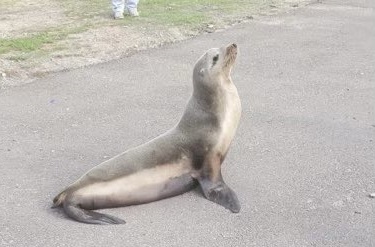A sea lion bit a teenager twice while swimming off the coast of Del Mar on July 4th. SeaWorld said the animal may be another victim of a toxic algae bloom in the Pacific.
Dane Blair, 14, was celebrating the holiday with his family when the sea lion attacked Tuesday. Blair said he was in the water when the sea lion made eye contact from about 30 feet away before the animal dipped beneath the surface.
“Next thing I know it takes a big bite here, on my leg,” he said while pointing to his right knee.
Get San Diego local news, weather forecasts, sports and lifestyle stories to your inbox. Sign up for NBC San Diego newsletters.
He said the sea lion then bit him on his right buttocks.
“It definitely hurt my butt because it took a big, a big bite,” said Blair, a soon-to-be freshman at La Costa Canyon High School.
Blair said he had to make it back to shore with the sea lion’s teeth attached to his backside.
“And so, I’m freaking out right now.”
He said he was able to shake the animal loose on the sand and run to his family.
Related Stories
Blair's dad Brian took smartphone pictures and videos of the wounds which were both deep enough to bleed but not deep enough to require stitches. Blair's shorts had teeth marks torn into the right side.
Meanwhile, the sea lion didn’t move from the sand where the water occasionally splashes against it.
“We’ve been coming to this beach for over 20 years. I’ve never even seen a beached seal or sea lion here,” Brian Blair said.
Lifeguards were notified and someone called SeaWorld. Something wasn’t right with the sea lion.
“It looked really tired. Its eyes were closed, and its mouth was twitching,” said Dane.
“It was lethargic,” added Brian. “It clearly wasn’t doing well.”
A SeaWorld spokeswoman said all the signs point to a naturally occurring algae bloom currently infecting marine life off San Diego’s coast.
SeaWorld veterinarian Kelsey Herrick, DVM, said fish eat the algae but only animals that eat the fish are affected.
“It does change the behavior and cause neurological symptoms and cardiac symptoms in sea lions and dolphins,” she explained.
“If this algae bloom is really causing animals to act erratically, we probably need to be a little bit more careful,” said Brian Blair.
SeaWorld was able to capture the sea lion. The organization said it’s doing what they can to care for the animal.
“I hope it gets better,” signed Dane.



